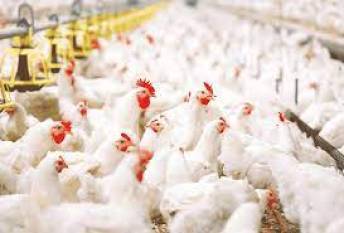MUMBAI, 23 October 2023: The Indian poultry market has witnessed significant transformations over the years, evolving from a small-scale, backyard industry to one of the largest and fastest-growing sectors in the country's agriculture and food industry.
The consumption of poultry products, primarily chicken and eggs, has surged, driven by rising incomes, changing dietary preferences, and a growing population. In this article, we will explore the current state of the Indian poultry market and provide insights into its outlook for 2030.
The Current Poultry Market in India
The Indian poultry market is a dynamic and multifaceted sector, contributing substantially to the country's economy. As of the latest available data, the market is characterized by the following key features:
-
Rapid Growth: The poultry sector in India has grown at a remarkable pace in recent years. It has become a critical contributor to the agriculture industry, offering significant employment opportunities and fostering economic development.
-
Increasing Consumption: The rising consumption of poultry products is one of the driving forces behind the market's growth. Indian consumers, in both urban and rural areas, have developed a taste for chicken and eggs as they become more affordable and accessible.
-
Vertical Integration: The industry has seen a shift towards vertical integration, with larger players consolidating their positions. Integrated poultry companies are involved in breeding, production, processing, and distribution, allowing for better quality control and cost-efficiency.
-
Technological Advancements: Modern poultry farming practices have adopted advanced technologies to improve productivity and animal welfare. These include automated feeding systems, climate control in poultry houses, and efficient disease management.
Outlook for 2030
As we look ahead to 2030, several trends and developments are likely to shape the Indian poultry market:
-
Sustained Growth: The Indian poultry market is expected to maintain its growth trajectory, driven by population expansion, urbanization, and changing dietary patterns. The per capita consumption of poultry products is projected to rise as incomes increase and more people migrate to urban areas.
-
Diversification: The market will witness diversification, with a focus on products beyond traditional chicken and eggs. The demand for value-added poultry products, such as processed and ready-to-eat items, is likely to surge. This shift will create opportunities for both large and small-scale producers.
-
Quality and Safety: Consumer awareness regarding food safety and quality is increasing. In response, the industry will need to invest in robust quality control measures, including hygiene practices, animal welfare, and safe handling of products. This will be crucial in maintaining consumer trust and complying with evolving regulations.
-
Sustainability and Animal Welfare: Concerns about sustainability and animal welfare will impact the industry. Poultry producers will need to adopt more sustainable and ethical practices, including organic and free-range farming. These approaches will appeal to conscious consumers.
-
Export Potential: The Indian poultry market has significant export potential. With appropriate infrastructure and compliance with international standards, Indian poultry products could tap into global markets, contributing to increased revenue for the industry.
-
Disease Management: Effective disease management and biosecurity measures will be imperative. Outbreaks of diseases like avian influenza pose significant threats to the industry. Investment in research and disease control strategies will be critical for sustainable growth.
-
Government Initiatives: Government support and initiatives, such as the National Livestock Mission, will play a vital role in shaping the industry's future. These programs aim to enhance productivity, animal health, and rural livelihoods.
-
Supply Chain Modernization: The poultry sector will see further modernization of supply chains, including transportation, processing, and distribution. This will improve the efficiency of getting products to consumers, reducing waste and ensuring product freshness.
Conclusion
The Indian poultry market is poised for substantial growth and transformation by 2030. As consumer preferences evolve, the industry must adapt to meet demands for quality, safety, and sustainability. This presents both opportunities and challenges for all stakeholders, from small-scale farmers to large integrated corporations.
By embracing technological advancements, improving disease management, diversifying product offerings, and adhering to global quality standards, the Indian poultry market can continue to prosper and contribute significantly to the nation's food security and economic growth. With the right strategies in place, the poultry industry is poised to play a pivotal role in India's journey toward a more resilient and sustainable food ecosystem.
Image credit: poultrytrends.in
By Jagdish Kumar, Editor




















